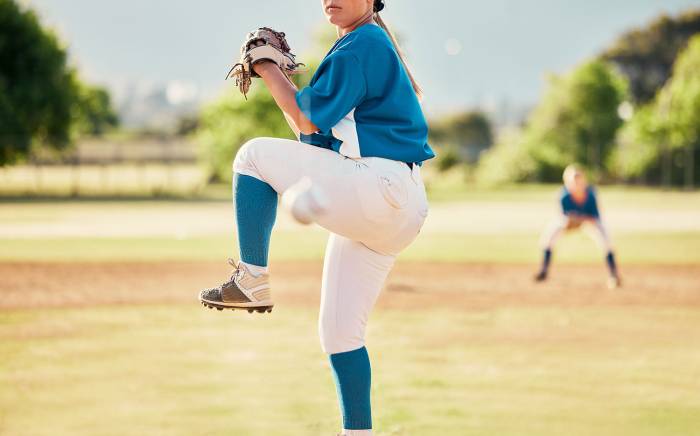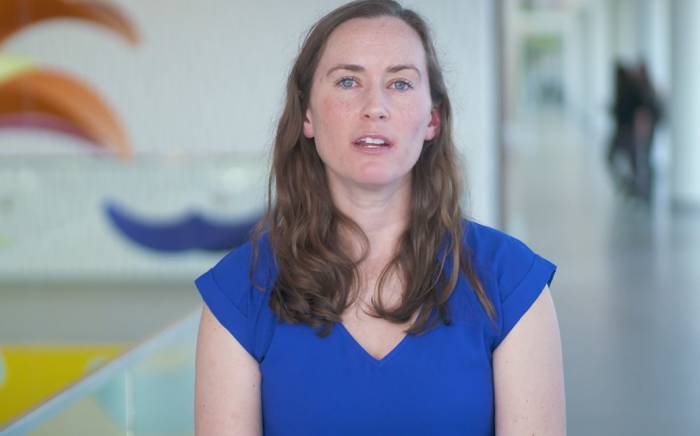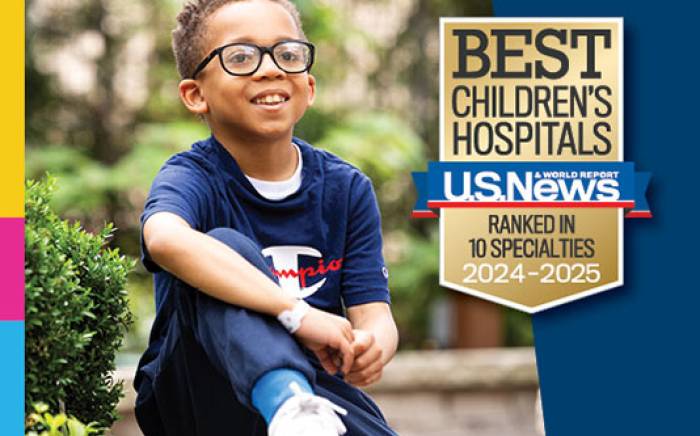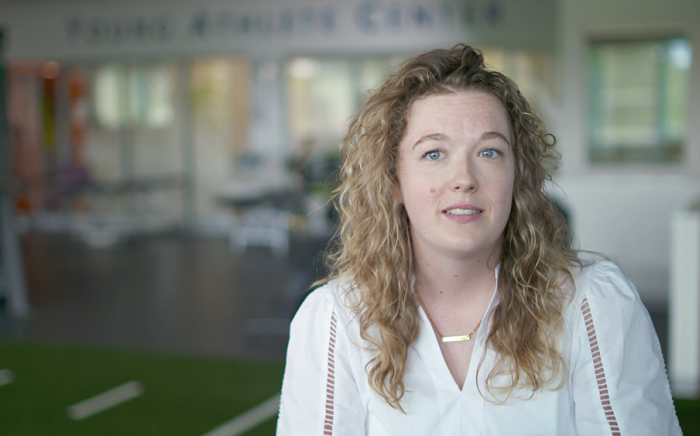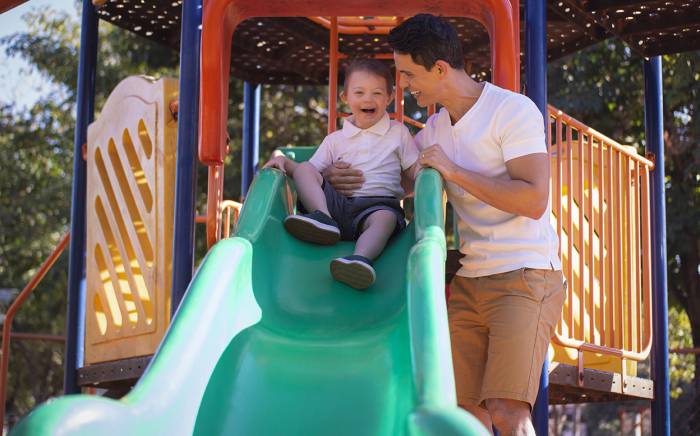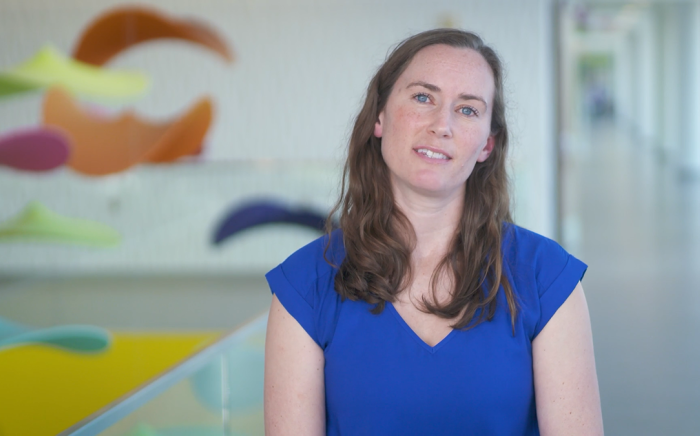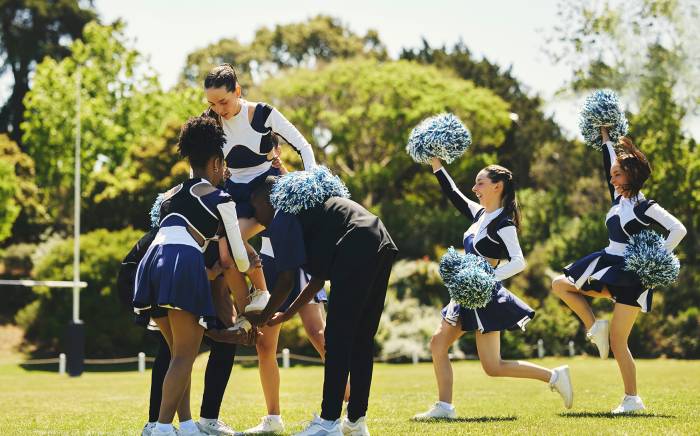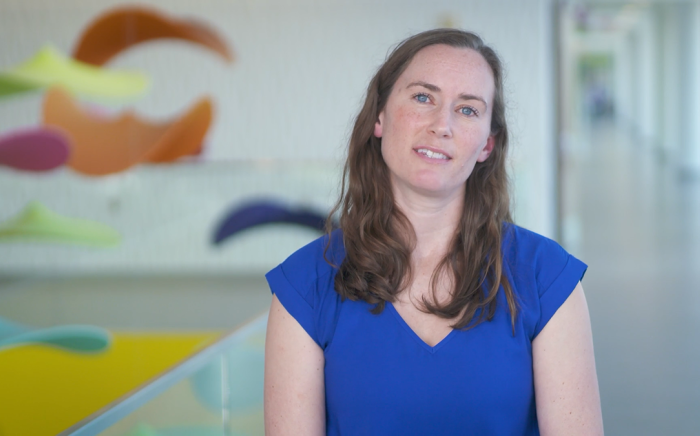
 Young athletes can now benefit from a new frontier of motion analysis technology to potentially prevent injuries that frequently leave them sidelined.
Young athletes can now benefit from a new frontier of motion analysis technology to potentially prevent injuries that frequently leave them sidelined.
In the past year, orthopedic surgeons and physical therapists at St. Louis Children’s Hospital began using a high-tech motion analysis technology called Noraxon in the hospital’s Young Athlete Center, a 4,000-square-foot sports therapy space dedicated to caring for kids of all ages with sports-related injuries.
The hope is the tool will ultimately help prevent injuries through high-tech analysis not previously possible.
Visualizing Movements to Correct Them
“Noraxon is changing the way we can prevent injuries or decrease time before an athlete returns to play,” explains Jeff Nepple, MD, a Washington University orthopedic surgeon and director of the Young Athlete Center. “Injuries in young athletes are extremely common

today especially because many kids specialize in one sport at such a young age now. A lot of major injuries happen because of issues with neuromuscular control so to prevent injuries, we need athletes to move in better ways. Motion analysis can demonstrate the ways they are moving incorrectly so we can address them.”
For example, ACL tears happen because of jumping, landing and pivoting with certain patterns of movement, Dr. Nepple says. “We could help young athletes prevent injuries by teaching proper movement patterns before the injury ever happens.”
Noraxon is specifically designed to capture the rapid movements of an athlete using a wireless and camera-less system. With Noraxon, an avatar of the athlete is created based on wireless sensors placed on the body that capture movement in real time.
“These sensors pick up the same thing as a traditional motion analysis system but in real time—we can use it in the Young Athlete Center or we can bring it on the field,” Dr. Nepple says. “It adds to what the eye can see because everything happens so quickly on the field. It adds another level of complex data in real time. For example, we can see how much the knee bends or rotates and put it all together and compare to what’s normal.”
The technology also helps athletes visualize their own movements. They can watch their avatar on a big-screen television to better understand how they are moving and what corrections are needed.
“This is the future of motion analysis,” Dr. Nepple says. “We’re on the front end of this technology—it’s not broadly used yet. Research is our next effort. We have great research in traditional motion analysis to understand patterns associated with ACL. But tools like Noraxon will allow us to screen athletes more broadly with motion analysis. The setup and data analysis are so rapid that we can really apply this in real time.”
Research is Elevating Evaluations
In the summer of 2019, Dr. Nepple and his team enrolled about 50 healthy athletes ages 12-18 in a study to determine what’s ‘normal’ in this population.
“While some centers use this technology in a sports performance setting, we’re trying to move this to the scientific realm by doing the research behind it,” Dr. Nepple says. “Our research efforts have gone into validating the technology, establishing variability in the neuromuscular profile of healthy athletes in order to understand what is normal. That’s a critical step before applying it to injured athletes.”
Dr. Nepple is excited about the research aspect of the technology. “Each step of research only brings up more questions. But our next main step will be seeing athletes return from injury. We want to know if motion-based technology can pick up more than our traditional tests. We still don’t have great tools for identifying athletes at risk for reinjury. We realized we were missing something. Much of our current focus is on getting symmetry with their other leg, but we might just be getting them back to the place that got them injured in the first place. But if motion analysis picks up issues that raise concern, we could target deficits before they return to full sports. This technology may put the pieces together that we haven’t figured out before.
“Noraxon is elevating the evaluation process.”
Dr. Nepple and the Young Athlete Center team is presenting this research in early 2020.
Targeted Intervention for Athletes at Risk
“This technology will be the next wave,” he says. “Let’s identify kids at highest risk for tearing their ACL and give them more targeted interventions. That’s where we hope to go. But we need research to back it before it can be broadly used for screening.”
As more research is conducted, Dr. Nepple hopes the tool can be used to screen entire teams to identify athletes at the highest risk. “We have programs to prevent ACL tears when used on a larger team basis. This motion analysis technology would allow us to better identify those athletes at highest risk and deliver a more intensive program to correct neuromuscular imbalances. We want to use this as an injury prevention tool.”
Currently, Dr. Nepple and his team are using Noraxon primarily in the lower extremities. The next focus will be to use it in the upper extremities to analyze throwing to prevent elbow and shoulder injuries.
Moving Research and Clinical Care Forward
With the opening of the Young Athlete Center in 2018, the team of physical therapists and physicians now has the space to incorporate Noraxon into daily operations.
“The Young Athlete Center is unique in the United States so many centers have visited us to see how we do things,” Dr. Nepple says. “We have a nice model for comprehensive care of the young athlete that includes physicians and physical therapists as well as a number of other specialties including sports psychiatry and nutrition. The Young Athlete Center is a good example of our collaborative work to move research and clinical care forward.”
Learn more about our sports medicine program or refer a patient, call Children's Direct at 800.678.HELP (4357).

